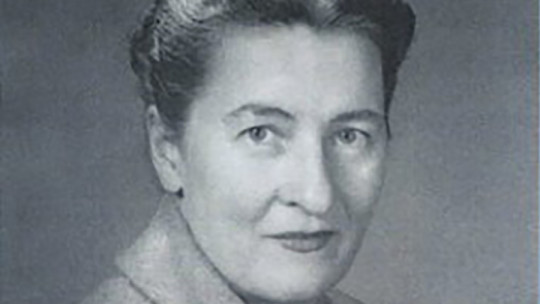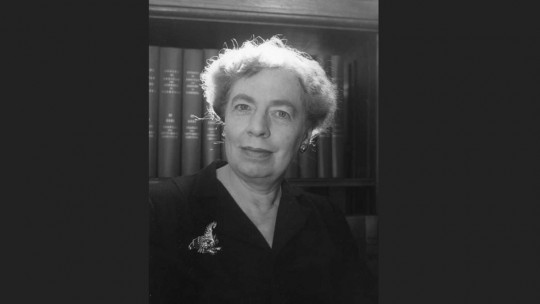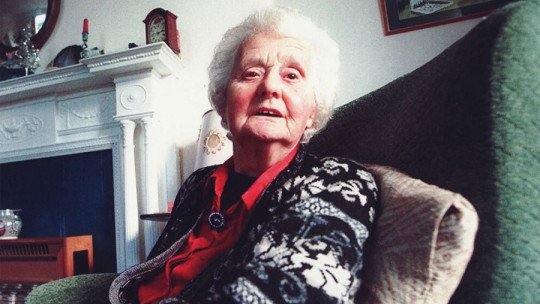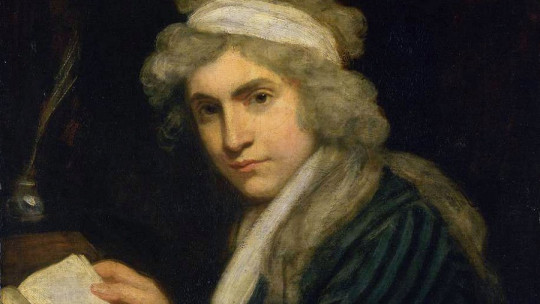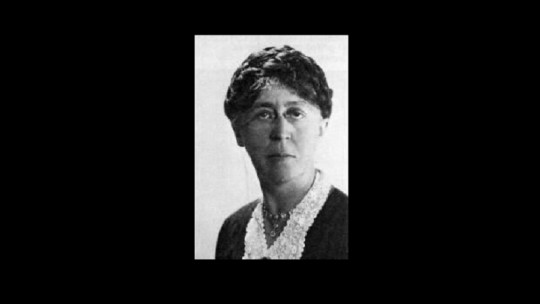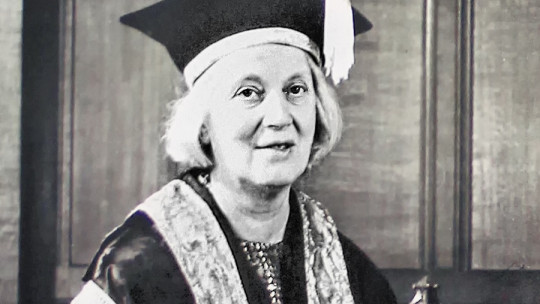Reconciling work and family is especially complicated, especially for women. Although steps are currently being taken to make these two spheres compatible, there is still a long way to go. His fight began many years ago with Mary Ainsworth.
Ainsworth was an American psychologist who supported this fight more than 70 years ago. She also made other contributions, such as attachment theory, through The strange situation. In this article we will briefly know a biography of Mary Ainsworth and a review of their contributions.
Mary Ainsworth: biography of this American psychologist
Mary Ainsworth was an American psychologist born in Glendale, Ohio, in December 1913. She entered the University of Toronto in 1929 and graduated in 1935. She is considered a pioneer in attachment studies, and consequently, in attachment theory On the other hand, he also became interested in aspects of women and human beings, which until then had been relegated to the background.
At the same time, she was one of the most influential and cited psychologists during the 20th century, despite the fact that in her time women’s professional role was very restricted. Currently, her contributions continue to be a pillar on which to build more studies in psychology.
Career and life
Mary Ainsworth was born in the United States, but Her family moved to Toronto, Canada, when she was a child She graduated in Developmental Psychology from the University of Toronto and obtained her PhD in 1939. Upon completion of her studies, she joined the Canadian Women’s Army Corps; She spent four years in the military and achieved the rank of Major.
After a few years she married and moved to London with her husband. So begins working at the Tavistock Institute alongside psychiatrist John Bowlby The two begin a path of research based on the separation experiences of children with their attachment figures or caregivers.
In 1953 he moved to Uganda and began working at the African Institute for Social Research in Kampala; There he continues his research into children’s early relationships with their mothers.
Some time later He obtained a position at the John Hopkins Institute in the United States and, later, at the University of Virginia where he continued to develop his theory of attachment, until he retired professionally in 1984.
Finally, Mary Ainsworth died in 1999, at the age of 86, after a lifetime dedicated to developing and researching one of the most important psychological theories we have today.
attachment theory
Mary Ainsworth developed together with John Bowlby one of the most important psychological theories for understanding early social development: attachment theory. This theory was initially formulated focused on children, although Mary Ainsworth later (in the 60s and 70s) introduced new concepts, finally in the 80s expanding the theory to adults as well.
To study attachment, he designed the strange situation, which we will see detailed in the following lines.
The strange situation
Mary Ainsworth is known, among many other contributions, for designing “The Strange Situation” in 1978 with her collaborators: it was a laboratory procedure to study attachment in childhood It consisted of establishing two episodes of separation between the child and his/her caregiver (generally the mother) to analyze the child’s type of attachment, through her attitude and exploration behavior under conditions of stress (separation). ).
Specifically, Mary Ainsworth and her collaborators studied children between 10 and 24 months of age, using 8 episodes that involved separations and reunions with mothers, as well as the presence of a stranger in some of them.
From this experiment, they classified the children’s attachment according to the behavior they showed during the separation, as well as their attitude during the reunion with the mother.
The results obtained suggested classifying attachment into four types: secure attachment, anxious-avoidant attachment, ambivalent-resistant anxious attachment, and disorganized/disoriented attachment. Let’s see what each of these types of attachment consist of:
1. Secure attachment
It is the most common attachment (appears in 65% of children). it implies the child actively explores when the mother is present (secure base), and becomes uneasy about separation Finally, the child is affectionate when the mother returns.
2. Avoidant, rejecting or avoidant attachment
It appears in 20% of cases. The child shows little discomfort at separation, avoids and ignores the mother when she returns , he appears angry and does not look for her when he needs her. Exploratory behavior is active. These are children who can be very sociable with strangers.
3. Ambivalent or resistant attachment
It occurs in 10-12% of cases. This type of attachment characterizes children who explore little, who stay close to the mother, who become very worried during and before separation, and who are ambivalent when the mother returns. They explore little and are difficult to calm
4. Disorganized-disoriented attachment
It appears in 3-5% of cases, and is the least secure pattern. Here resistant and avoidant patterns are combined ; inconsistent and contradictory behaviors appear.
The work of Mary Ainsworth
Mary Ainsworth highlighted the importance of developing a healthy maternal attachment relationship, that is, a healthy and secure attachment in the child. She also highlighted the influence that an insecure attachment could have on the child, as well as on her adulthood.
According to Mary Ainsworth’s attachment theory, one of the essential factors that affect attachment is the mother’s sensitivity to her baby’s needs which is considered vital for the development of a secure attachment.
This psychologist spoke many times in favor of the need to implement programs that will help women make their professional careers compatible with motherhood This was so since at that time it was almost unthinkable that women could make these two facets of their lives compatible. This is why Mary Ainsworth is considered one of the precursors of work-life balance programs for mothers. Thus, she was a researcher and at the same time a protester, and she fought for women’s rights in that sense, taking an interest in very important aspects for women, those that had always been left aside.

